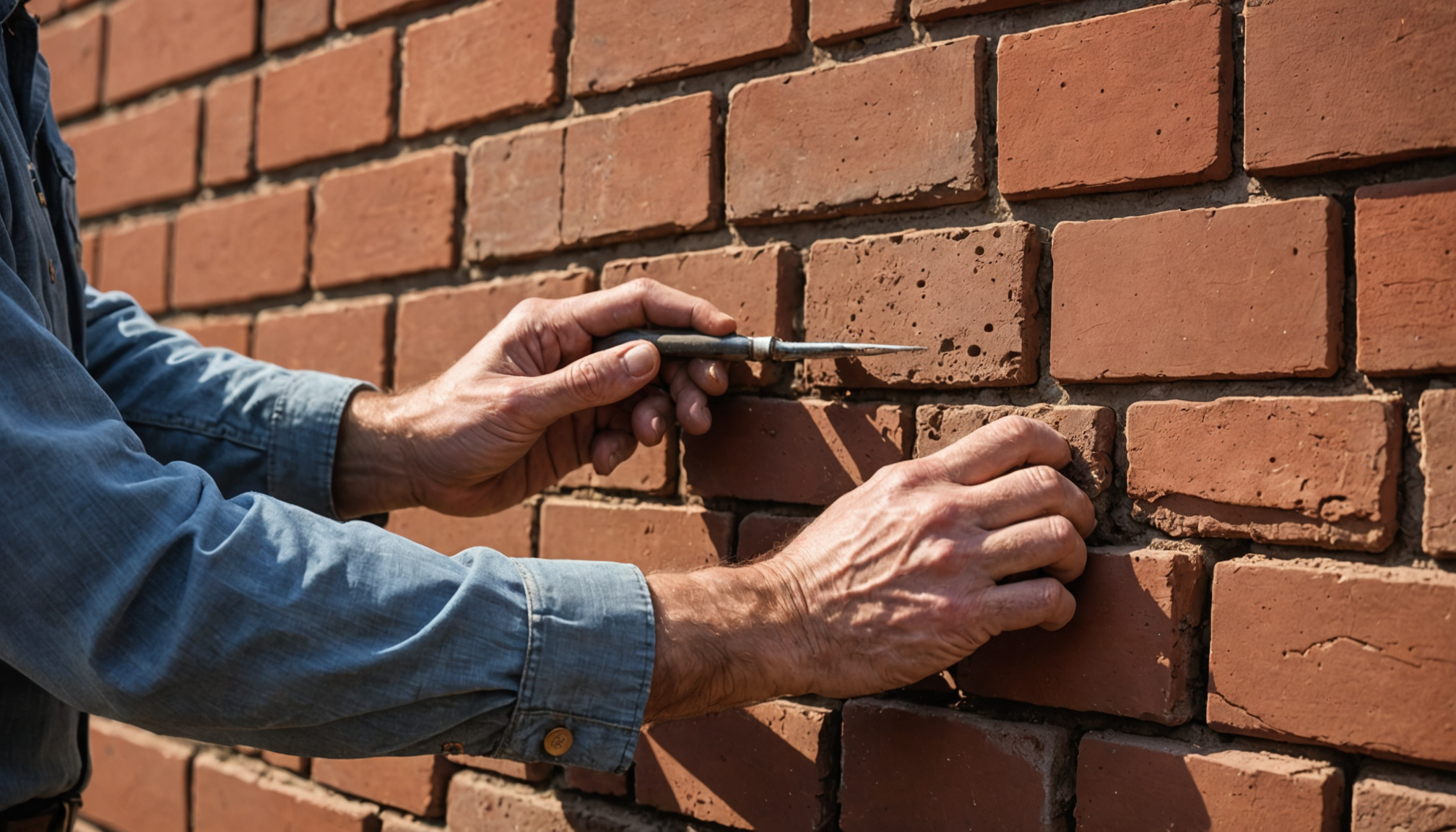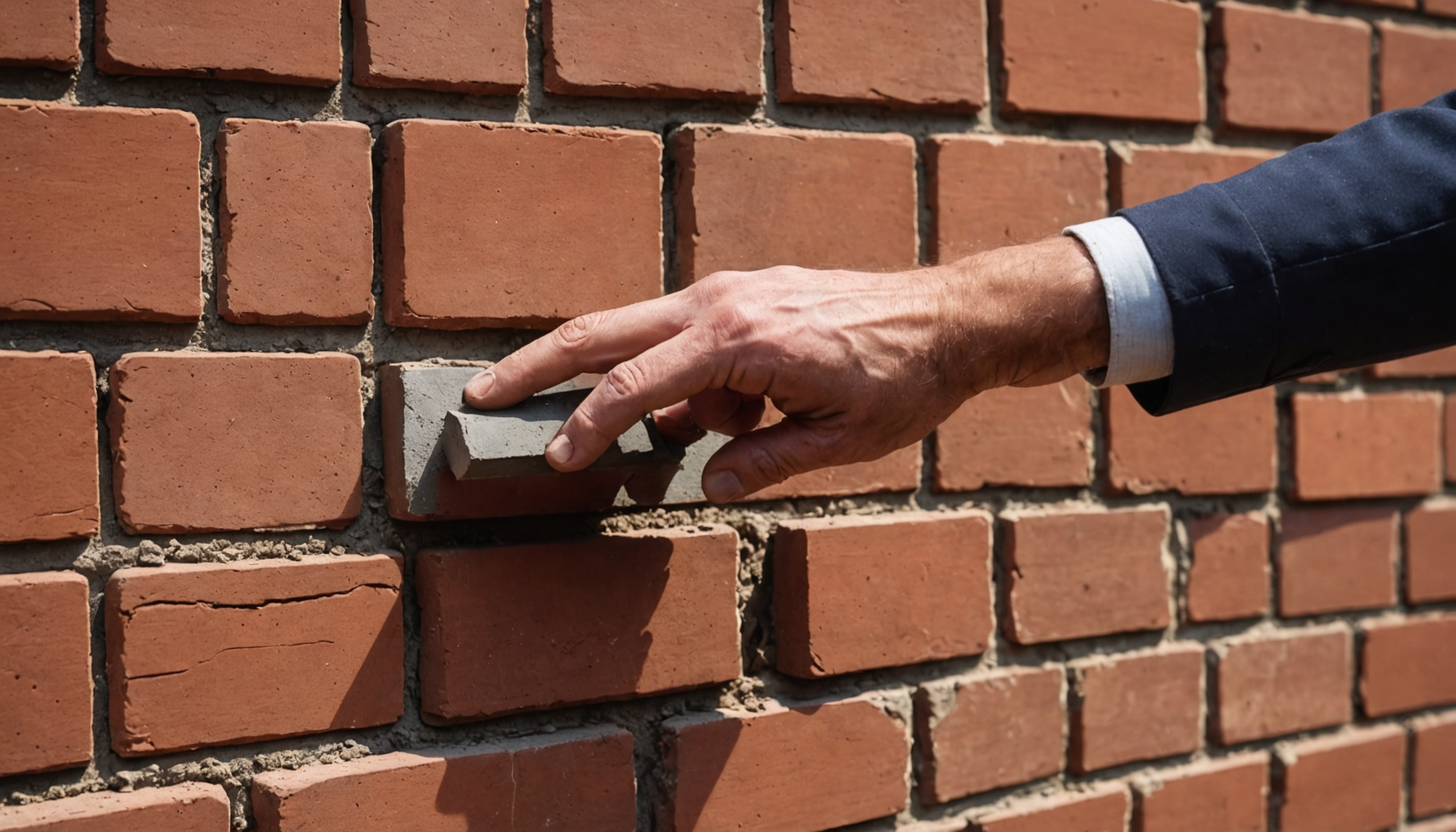Tuckpointing is an essential preservation technique for brick exteriors, particularly those commonly found in historic St. Louis neighborhoods. As an integral part of masonry restoration, tuckpointing involves the meticulous removal and replacement of deteriorated mortar between bricks. This process is not merely about improving aesthetics; it plays a critical role in enhancing the structural integrity of brickwork. A well-executed tuckpointing job can prevent costly damage like water ingress and pest infestations, while also extending the lifespan of a structure.
Given the age and architectural heritage of many St. Louis properties, understanding and recognizing the significance of tuckpointing becomes crucial. The city’s distinct red brick buildings, often admired for their classic charm, are particularly susceptible to the region’s extreme weather conditions. Fluctuations between humid summers and freezing winters can wreak havoc on brick exteriors, causing mortar joints to crack and weaken over time. According to the Brick Industry Association, maintaining these mortar joints is crucial in preventing moisture penetration, which can lead to significant internal damage and costly repairs.
Furthermore, tuckpointing offers a dual benefit; it not only fortifies the structural stability of a building but also enhances its aesthetic appeal. For property owners concerned about preserving the historic authenticity of their homes, skilled tuckpointing can seamlessly blend new mortar with old, maintaining the building’s original appearance. Employing professionals with a deep understanding of masonry can ensure the correct techniques and materials are used, considering factors like color matching and compatibility, which are vital for a successful outcome. In the context of St. Louis, with its rich architectural history, this expertise is particularly valuable.
Identifying signs of brick exterior deterioration
Brick exteriors, particularly those in historic St. Louis buildings, often reflect an undeniable architectural charm but can suffer significant deterioration over time if not properly maintained. Identifying early signs of deterioration is critical in ensuring timely, effective intervention through processes like tuckpointing. Brick deterioration often manifests in specific, telltale signs that property owners or caretakers should routinely check.
Key indicators of deterioration include mortar joint decay, where the mortar lines begin to visibly crumble or fall away. This leaves gaps and weakens the entire masonry structure. Mortar’s primary role is to bind bricks together, providing structural integrity, so any signs of failing mortar are cause for concern. Another red flag is water damage, which is particularly problematic in St. Louis due to frequent moisture exposure from rainfall and humidity. Look for efflorescence, a white, powdery residue often left by soluble salts when moisture evaporates from the brick surface. Additionally, cracks forming either linearly or as spiderweb patterns can indicate structural stress or weathering impact, and spalling, where parts of the bricks themselves start flaking or chipping away, points to severe deterioration.
Weather extremes prevalent in St. Louis exacerbates these issues. For instance, the freezing and thawing cycles of cold months can cause trapped moisture within the bricks to expand, leading to cracking or spalling. Periodic inspections and prompt repair measures like tuckpointing can mitigate such damages and prolong the life of brick exteriors.
- Regular inspections are crucial in catching early signs of deterioration, allowing for timely maintenance and repairs.
- Watch for efflorescence, spalling, and cracking, which are common indicators of underlying water damage and structural issues.
- Bricks affected by extreme weather conditions in St. Louis, such as freeze-thaw cycles, might require more frequent maintenance.
- Mortar joint decay demands immediate attention, as it compromises the structural integrity of the entire brickwork.
- Prompt repairs, including tuckpointing, can prevent minor issues from developing into costly structural problems.
Step-by-step guide to effective tuckpointing
Tuckpointing requires careful attention to detail to ensure both the durability and appearance of brick exteriors, particularly in St. Louis where climate conditions pose additional challenges. Here’s a step-by-step guide to effective tuckpointing, helping avoid common mistakes and ensuring a lasting repair.
Begin with a thorough assessment of the brickwork. Identify areas where the mortar joints appear cracked, crumbling, or recessed. Work meticulously to avoid overlooking subtle signs of deterioration. Using the wrong assessment techniques can lead to unnecessary repairs or missed problem areas.
Once the areas in need of tuckpointing are identified, the next crucial step is to properly remove the old mortar. Use a chisel or a specialized raking tool to carefully remove loose or damaged mortar. Avoid using power tools that could damage the bricks. Many people make the mistake of using tools that are too aggressive, which can harm the integrity of the surrounding bricks.
Selecting the right mortar mix is essential, especially considering St. Louis’s variable climate. The replacement mortar should match not only the color but also the strength and permeability of the original. Using a mortar that is too strong can cause further cracking in the brickwork as temperatures fluctuate.
Mix the new mortar to the right consistency, ensuring it is not too wet or too dry. Improper mortar consistency is a common error, leading to poor adhesion and, eventually, further deterioration. Those new to tuckpointing often make the mistake of adding too much water, which weakens the mortar.
Carefully fill the joints with the new mortar using a pointing trowel, ensuring they are compacted firmly and smoothly. Take special care to match the original joint lines to maintain the aesthetic integrity of the structure. Avoid overfilling, which can lead to unnecessary protrusions that gather moisture and debris.
Cure the mortar correctly by keeping the newly tuckpointed area moist. Inadequate curing can lead to cracking and premature failure. St. Louis’s hot summers can dry out mortar too quickly, so lightly misting the work area frequently can help achieve a proper cure.
Lastly, clean any excess mortar from the surface of the bricks using a soft brush once the mortar has set. This prevents staining or surface damage. Many skip this step, resulting in a sloppy finish that detracts from the building’s beauty.
With careful execution of these steps, and avoiding common pitfalls, effective tuckpointing can be achieved, ensuring the brick exteriors in St. Louis remain both structurally sound and aesthetically pleasing for years to come.
Selecting the right materials for St. Louis climate
In the unique climate of St. Louis, selecting the appropriate materials for tuckpointing projects is critical to ensuring the longevity and stability of brick exteriors. The city’s weather, characterized by hot, humid summers and cold, wet winters, imposes certain demands on masonry work. These environmental factors make it important to choose materials that can withstand significant temperature fluctuations and moisture levels without compromising the structural integrity.
When selecting mortar, it is vital to ensure that it complements the existing masonry both aesthetically and functionally. The mortar should have a similar compressive strength to that of the original, and its permeability should allow for adequate moisture escape. A mortar mix that is too hard can cause stress within the bricks, leading to cracking, especially during the freeze-thaw cycles that St. Louis experiences. Lime-based mortars are often recommended for their flexibility and ability to expand and contract with the surrounding bricks, preventing damage.
In terms of brick selection, if any replacement is necessary, matching the type, color, and size to the existing structure is essential for maintaining historical authenticity and visual harmony. The bricks should be of high quality, frost-resistant, and compatible with the existing ones to avoid future issues.
Considering St. Louis’s moisture-heavy environment, it’s also crucial to incorporate water-resistant sealants or coatings as part of the tuckpointing project. These products can provide a protective layer against moisture penetration while allowing the masonry to breathe, preventing issues like efflorescence and spalling.
To wrap up this section with actionable advice: always conduct thorough research or consult with a masonry expert familiar with St. Louis’s climate when choosing materials. Prioritize compatibility between new and existing materials, ensuring that they work in harmony with the weather conditions to avoid premature deterioration. Understanding that this investment of time and effort will preserve the beautiful and historic brick exteriors can be motivating, as it not only maintains property value but also contributes to the city’s architectural legacy. With careful attention to material selection, you can confidently tackle tuckpointing projects, knowing you’re laying a foundation that will withstand the test of time.
Maintenance tips for lasting brick exteriors
Regular maintenance is essential for ensuring that brick exteriors in St. Louis remain durable and aesthetically pleasing. One vital aspect of upkeep is conducting routine inspections to catch issues early. Regularly examining the brickwork, preferably bi-annually, can help identify signs of wear, such as cracks or loose mortar, before they evolve into more extensive problems requiring major repairs.
Choosing the right timing for maintenance tasks is also crucial, especially considering St. Louis’ extreme weather conditions. Late spring and early fall are ideal periods to address masonry concerns since these seasons offer moderate temperatures and reduced moisture levels, minimizing the risk of complications during repairs. Additionally, keeping an eye on the weather forecast when planning maintenance work can help avoid disruptions caused by unexpected rain or temperature changes.
Cleaning brick exteriors appropriately also plays a significant role in their preservation. Avoid harsh chemicals and high-pressure washing that can damage the surface. Instead, utilize gentle cleaning solutions and soft brushes to remove dirt and debris without compromising the integrity of the bricks or mortar. This practice not only prevents aesthetic issues but also eliminates residues that might cause deterioration over time.
Protecting brick structures from water intrusion is critical in the moisture-prone environment of St. Louis. Ensure that gutters and downspouts are in good condition and suitably direct water away from the building’s foundation. Such measures help prevent water from pooling around the base of the brick walls, reducing the risk of rising damp or efflorescence that often lead to more extensive masonry issues.
Finally, investing in periodic professional evaluations is a wise approach for maintaining the health of brick exteriors. Masonry experts can offer insights into more subtle signs of trouble and recommend preventative measures tailored to St. Louis’s specific climate challenges. Their guidance can help homeowners and property managers extend the lifespan of their brick exteriors while preserving the unique architectural charm of the region’s historic buildings.
- How often should I inspect my brick exterior?
- It’s advisable to inspect your brick exterior at least twice a year. This regular schedule helps you catch potential issues early, preventing small problems from escalating into costly repairs.
- What cleaning methods are safe for brick exteriors?
- Avoid using harsh chemicals or high-pressure washing, as these can damage the brickwork. Instead, use gentle, biocompatible cleaners and soft brushes to remove dirt and debris safely.
- Can I seal my brick exterior to protect it from moisture?
- Yes, applying a breathable water-repellent sealant can offer added protection against moisture without trapping it inside the masonry. This can help prevent issues like efflorescence and spalling.
- What should I do if I notice cracks in the mortar?
- If you see cracks forming in the mortar, it’s crucial to address them promptly. Consider tuckpointing as a repair solution to remove damaged mortar and replace it with fresh, suitable material to restore both stability and appearance.
- Should I hire a professional for maintenance, or can I do it myself?
- While minor inspections and cleaning can be done by homeowners, hiring a professional for more complex maintenance like tuckpointing or structural assessments is recommended. Expertise is needed to ensure the longevity and safety of the brickwork, especially given St. Louis’s unique climate challenges.

